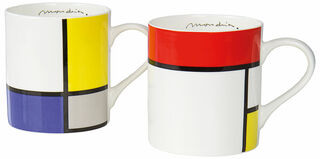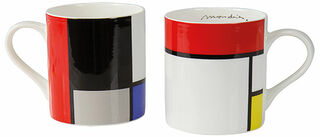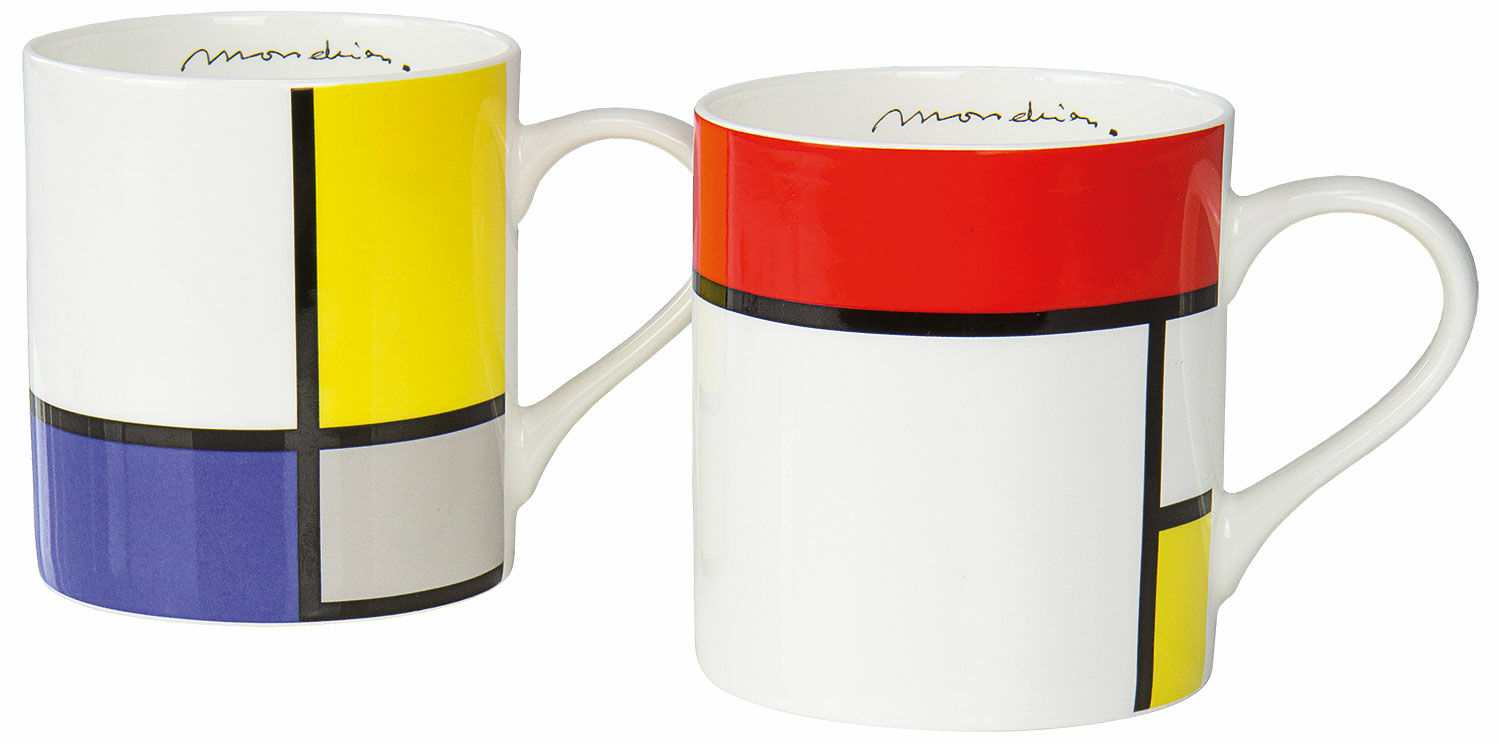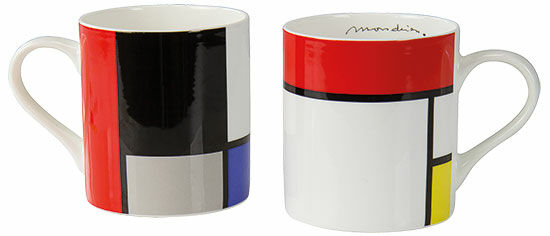Set of 2 mugs "Composition", porcelain
Set of 2 mugs "Composition", porcelain
Quick info
ars mundi Exclusive Edition | signature | porcelain | capacity 0.38 l each | dishwasher-safe | only available as a set
Detailed description
Set of 2 mugs "Composition", porcelain
Mondrian's strict geometric compositions, presented in the characteristic primary colours, on two matching mugs. Made of bone china porcelain. Capacity 0.38 l each, dishwasher safe. ars mundi Exclusive Edition with artist's signature. Coffee mug set of 2. Height 9 cm each. Ø 8.2 cm each. Weight 0.4 kg each.
Customer reviews
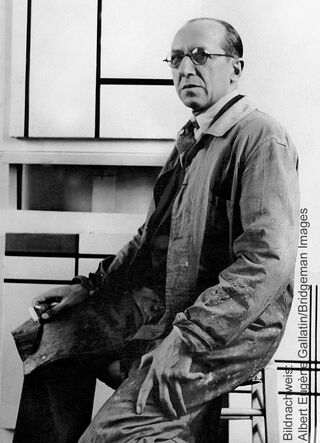
About Piet Mondrian
1872-1944
It is hard to imagine that Piet Mondrian's strictly geometric compositions had their origins in painterly, filigree landscape studies. At the age of 20, as a student of the Art Academy in Amsterdam, he was drawn to Impressionism. In the neutral Netherlands, he was spared the turmoil of the First World War for a long time and was able to follow his inspiration and theosophical studies. There the first Fauvist and Neo-Impressionist elements appeared in his paintings.
In Paris, which he visited for the first time in 1912, he took part in several "Salons des Indépendants", where he was influenced by the cubism of Georges Braque and Pablo Picasso. Mondrian for example reduced the lines of a tree until the form of the tree is barely discernable and black, orthogonal bars divided the picture surface and becomes secondary to the overall composition of vertical and horizontal lines, he filled the spaces in between with white and primary colours.
Because of his profound knowledge of abstraction, he co-founded the painter, designer and architect group "De Stijl" in 1917 - the Dutch counterpart to the German group "Bauhaus". In his paintings, everything should be in balance, the depth effect should disappear so that "pure reality" remains.
Mondrian's visionary style left clear traces in art, design and architecture, also in New York, where the artist finally emigrated in 1940.
Graphic or sculpture edition that was initiated by ars mundi and is available only at ars mundi or at distribution partners licensed by ars mundi.
Ceramic product made of kaolin, quartz and feldspar.
Porcelain is formed by turning or pressing and figurative objects are cast. Complex objects have to be cast in separated steps and sections and then "assembled". After the moulding, the pieces are dried and "annealed" at about 900 °C. Next, the glaze will be applied and fired at temperatures between 1,240 °C and 1,445 °C. In renowned manufactures, the porcelain is painted by hand whereby each colour has to be fired individually and in compliance with narrow temperature tolerances.
Porcelain was invented in China and became widespread in Europe from the 16th century onwards. The first European porcelain factory was founded in Meissen, Germany in 1710.
Other famous European porcelain factories include Fürstenberg, Höchst, Schwarzburger Werkstätten, Lladró, Nymphenburg, KPM, Augarten, Sèvres, Limoges, Royal Copenhagen, Worcester. Individual factories label their products with their personal porcelain stamps so that for the collecter it is easy to identify their origin.

